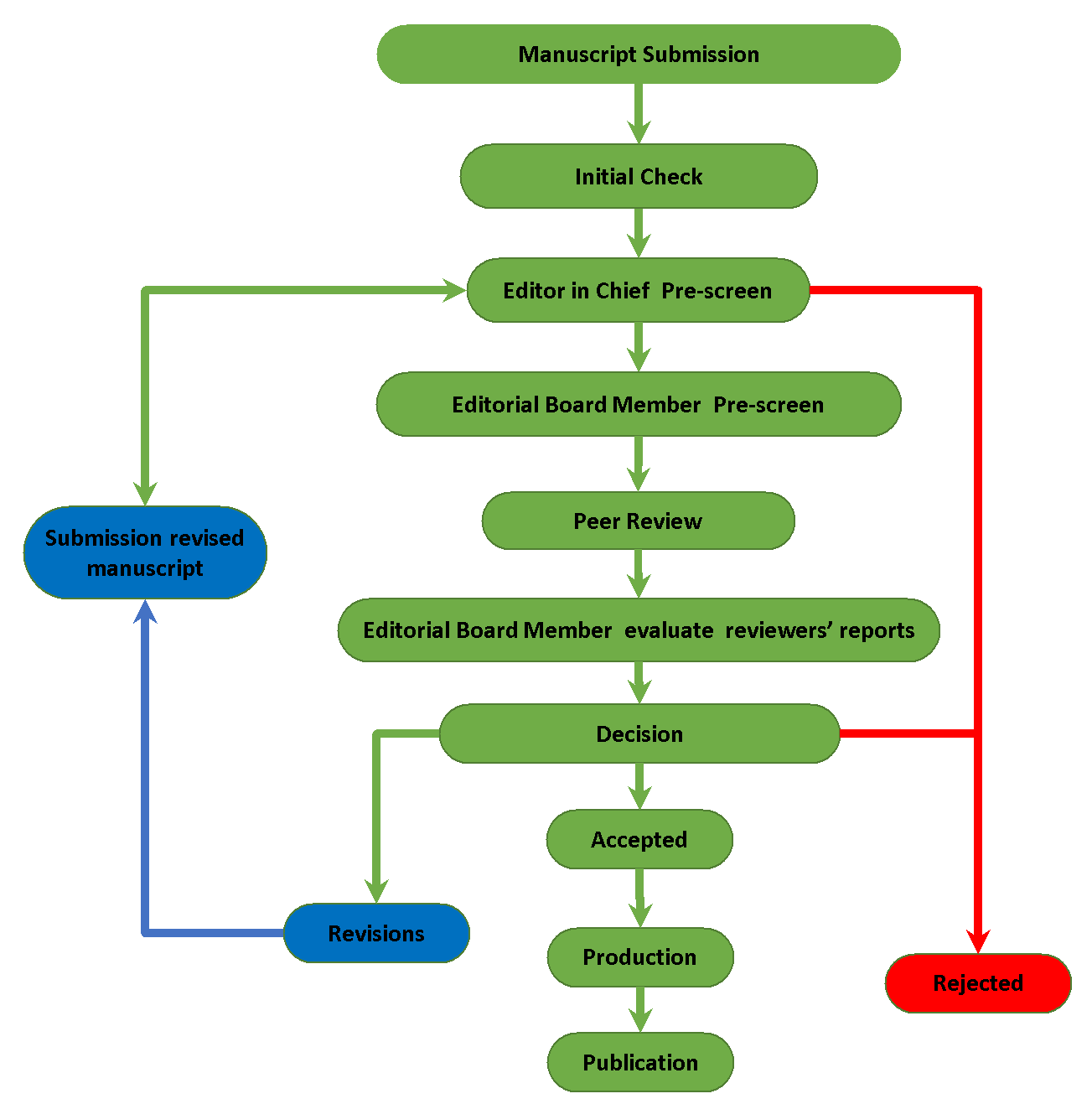Peer Review Process

The peer review process is essential for supporting the integrity and quality of scholarly research. It serves to ensure that published articles adhere to rigorous scientific standards in terms of accuracy, significance, and methodological rigor. The process typically involves a series of 10 key steps, which can be summarized as follows:
1. Manuscript Submission: Authors submit their research article to the editorial office of the journal via an online submission system. The corresponding author plays a crucial role in this step.
Initial Check
1. Scope
2. Format
3. Quality of tables & figure
4. Reference style
5. Copyright form
6. Plagiarism (Turnitin)
2. Editorial Pre-Screening: The Editor-in-Chief or Editor assesses the manuscript's relevance, originality, and adherence to the journal's scope. They may also consider potential ethical concerns. If the manuscript aligns with the journal's criteria, it proceeds to the next step. The Editor-in-chief may reject the manuscript at this stage.
3. Reviewer Assignment: The Editor identifies potential Reviewers who possess expertise in the subject area of the manuscript. Reviewers are typically researchers or scholars in the field. The identities of the reviewers will be kept confidential (double-blind review) to the authors, depending on the journal's policy.
4. Review Process: The manuscript undergoes a comprehensive evaluation by the assigned reviewers, who carefully assess various aspects such as the research methodology, data analysis, interpretation of results, and overall scientific rigor. They provide constructive feedback, suggestions for improvement, and an evaluation of the manuscript's strengths and weaknesses.
5. Reviewer Recommendations: Based on their evaluation, Reviewers make recommendations to the Editor regarding the acceptance, revision, or rejection of the manuscript. Reviewers may suggest minor or major revisions to address any identified issues or concerns. Reviewers are given a specific deadline to submit their feedback to the Editor, ensuring timely decision-making.
6. Editorial Decision Making: The Editor evaluates the feedback provided by the Reviewers, conducts his/her own assessment of the manuscript, and assesses its overall quality and suitability. Based on these considerations, the editor arrives at a decision, which may involve accepting the manuscript, rejecting it, or requesting revisions.
7. Communication with the Corresponding Author: The editor informs the corresponding author of the decision. If revisions are required, the editor provides clear guidelines and a deadline for the corresponding author to address the Reviewers' Concerns and incorporate necessary improvements into the manuscript.
8. Revision Process: The corresponding author revises the manuscript based on the feedback received from the Reviewers, addressing each comment, and making appropriate changes.
9. Final Evaluation: The editor conducts a final evaluation of the revised manuscript to ensure that the concerns raised by the reviewers have been adequately addressed. In certain instances, the manuscript may be sent back to the same Reviewers or additional Reviewers for further assessment.
10. Production and Publication: Upon final acceptance, the manuscript enters the production phase, where it undergoes copyediting, typesetting, and formatting to meet the Journal’s Guidelines. The article is then published in the journal and made available online and for open access. It receives a unique identifier, such as a DOI, for proper citation and indexing.













